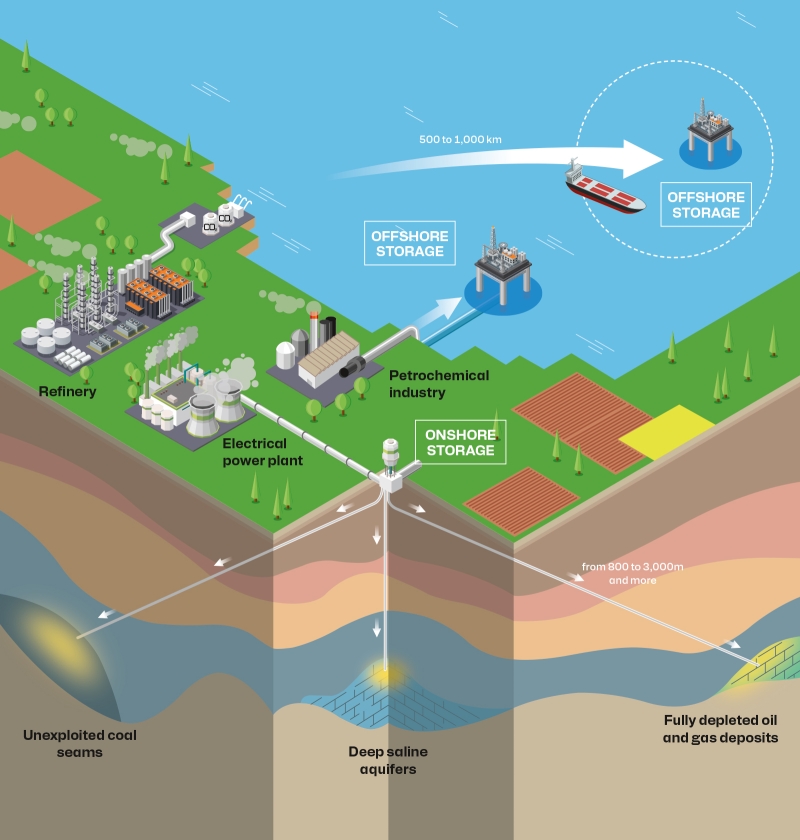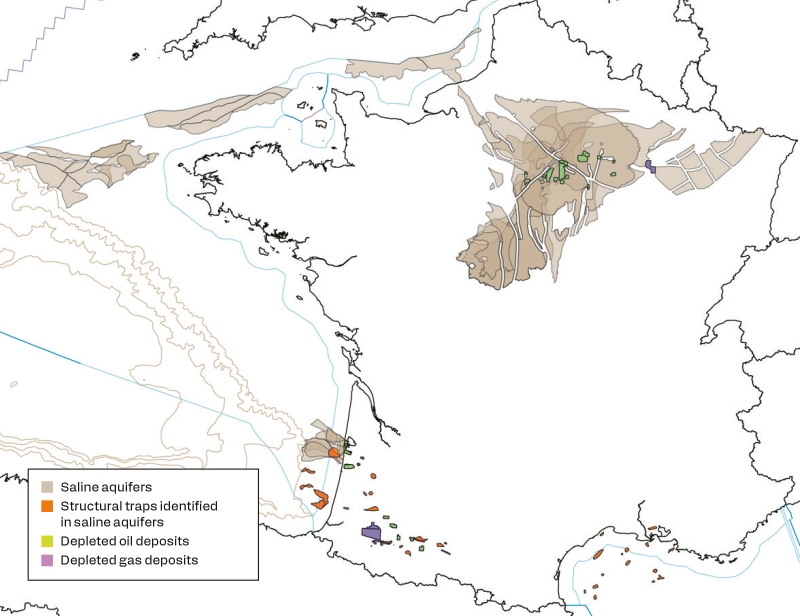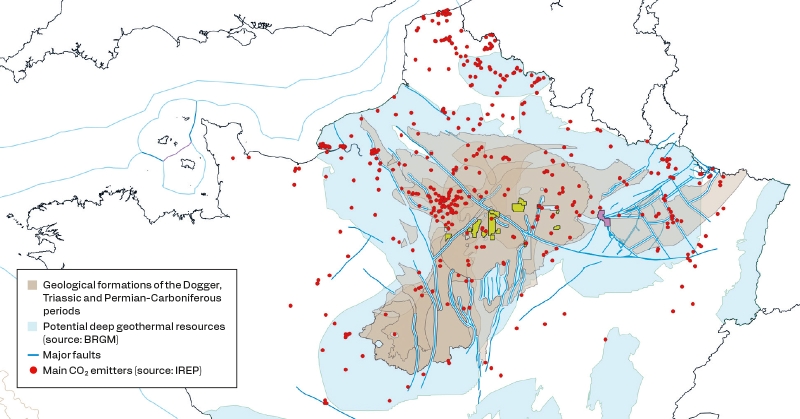CO2 from industrial emitters is captured, compressed and then transported by pipeline or ship to a geological storage site: a deep saline aquifer, a former hydrocarbon deposit or an unexploited coal seam. © Agence Idé
Subsurface energy and decarbonisation
Outstanding result / A first step towards the geological storage of CO₂ in France
Reducing greenhouse gas emissions, particularly carbon dioxide (CO2) – the main cause of climate change according to the latest IPCC reports – is now a major challenge. In this context, capturing CO2 and storing it underground is one of the strategies for achieving carbon neutrality by 2050. The European Commission, in its Net-Zero Industry Act, even sees them as an important lever for decarbonisation, and plans to develop an annual injection capacity of at least 50 million tonnes of CO2 across the European Union by 2030. Each country has therefore been asked to estimate the geological storage capacity in its territory.
Two types of geological reservoir
This was the aim of the EVASTOCO2 study commissioned by the General Directorate for Energy and Climate (DGEC) of the French Ministry for Ecological Transition, co-financed by Ademe and coordinated by BRGM. A number of stakeholders specialising in knowledge and exploitation of the subsurface (Akkodis, Avenia, CVA, Geostock, IFPEN, Teréga, TotalEnergies, Université de Lorraine) have participated in the compiling of an inventory of CO2 geological storage capacity in mainland France, both on land and offshore. Although carbon capture and storage trials have been carried out here for some fifteen years, this technology has not yet been developed on an industrial scale, unlike in other countries. “The current idea is to capture the CO2 after combustion and transport it to geological storage sites, mainly in Northern Europe,” says Thomas Le Guénan. “However, such transport would impose a significant cost on industrial emitters”. Developing injection locally is therefore part of a strategy for economic sovereignty and autonomy for the sector at the national level.
EVASTOCO2 targeted five areas in France’s major sedimentary basins: the Paris Basin, the Lorraine Basin, the Aquitaine Basin, the South-East Basin and the Gulf of Lion, as well as the Atlantic coast (Channel, Bay of Biscay). CO2 is stored in porous sedimentary rock at depths of over 900 metres. But to prevent gas from rising and escaping following the injection, these “reservoir” rocks must be covered by a “caprock”, an impermeable layer. “These conditions are naturally found in two types of site: former hydrocarbon deposits – ‘depleted reservoirs’ – and deep saline aquifers whose water is unfit to drink,” explains Thomas Le Guénan. The latter are, moreover, of great interest given their significant storage potential and their good geographical distribution throughout mainland France.
Potential CO2 geological storage areas studied in EVASTOCO2. A total of 4,700 million tonnes of CO2 could be stored underground in the subsurface of mainland France. © BRGM
Towards locally targeted studies
The potential of depleted reservoirs and saline aquifers has been analysed “using a methodology that we have taken care to unify, given the diversity of the partners involved, in order to identify and characterise resources as well as to calculate the uncertainty associated with the estimates,” emphasises André Burnol, who coordinated the study. “The results show that mainland France has significant potential for geological storage, estimated at 700 million tonnes of CO2 from depleted reservoirs and 4,000 million tonnes from deep saline aquifers, including 2,300 million tonnes on land and 1,700 million tonnes at sea,” explains Aurélien Bordenave.
The study produced a national atlas of potential CO2 geological storage capacity, with detailed mapping of the sites under consideration, as well as an inventory of other current or future uses of the subsurface. “As a first estimate, EVASTOCO2 is a significant step forward,” says Thomas Le Guénan. “However, more precise studies will be needed to refine the actual capacities of each reservoir and determine the feasibility, in technical, economic and societal terms, of a CO2 geological storage project on a more local scale.”
Close-up on potential CO2 storage areas in the Paris Basin. © BRGM











